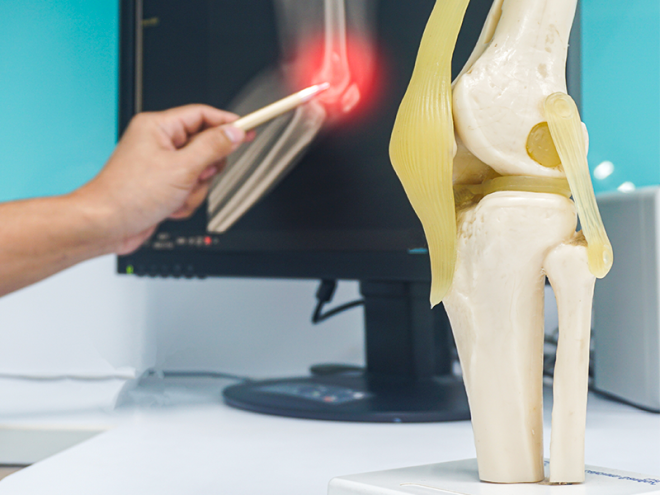Some Ideas on Axis Spine And Orthopedics You Should Know
Some Ideas on Axis Spine And Orthopedics You Should Know
Blog Article
The Only Guide for Axis Spine And Orthopedics
Table of ContentsNot known Details About Axis Spine And Orthopedics Some Known Factual Statements About Axis Spine And Orthopedics The Ultimate Guide To Axis Spine And OrthopedicsThe Ultimate Guide To Axis Spine And Orthopedics
An orthopedic doctor is a doctor that specializes in treating troubles of the bones, joints, and connective tissues, and guaranteeing you keep a healthy and balanced bone and joint system., we have very qualified orthopedic cosmetic surgeons that are qualified of dealing with patients of all ages. I got involved in research during my initial year of medical college, and I started making connections with orthopedic specialists early on.
Follow these standards very carefully to prevent problems during the treatment. Go over the post-operative treatment plan with your specialist. Recognize what to expect during the healing duration and the length of time it will certainly take to resume day-to-day tasks. Organize for transport to and from the medical facility on the day of surgical procedure.
Getting The Axis Spine And Orthopedics To Work

Your physician will give lots of details regarding post-operative care, consisting of exactly how to remain clean and maintain the medical location tidy. Complying with these pointers can prepare you literally and mentally for your orthopedic surgical procedure. Remember to keep a positive expectation and count on your medical team's knowledge, adding to a smoother recuperation procedure.

No one expects you to know anything, so do not attempt to memorize a bunch of arbitrary realities. Or else, joint pain can really mess up your life.
The consistent pains in your knee or the rigidity in your shoulder can slow you down and make easy jobs challenging. Common conditions treated by orthopedic doctors are: Cracks and Bone Trauma: Broken bones and other injuries from accidents or influences. Arthritis: Especially osteoarthritis, which triggers joint discomfort and rigidity. Benign Soft Cells Tumors: Non-cancerous growths in muscles or other soft cells. Bone Cancer Cells: Lumps in the bones. Bursitis: Inflammation of the tiny sacs of.
Indicators on Axis Spine And Orthopedics You Should Know
liquid that cushion the bones, ligaments, and muscle mass near your joints. Neck and Lower Neck And Back Pain: Problems affecting the back. Orthopedic Injury: Extreme injuries influencing bones, joints, or soft cells. Sports Injuries: Issues like ligament tears, tendon injuries, and joint pain from sports tasks.
Strains and Stress: Injuries to tendons and muscle mass. Tendinitis: Inflammation of the ligaments. Orthopedic doctors do a selection of treatments to assist people with bone and joint issues. Common instances are knee and hip substitutes. Joint Repair: Restoring a harmed joint to recover its function. Bone Grafting: Taking bone from one part of the body and transplanting it to another area to repair and restore harmed bones. Reconnecting Nerves: Fixing broken nerves to bring back motion and feeling. Spinal Disk Replacement: Replacing a damaged spinal disk with a man-made one to alleviate discomfort and restore feature. You'll need to take and pass the Medical University Admission Test( MCAT). This standardized test examines your knowledge and skills needed for success in clinical school. Clinical school is an extreme

8 Simple Techniques For Axis Spine And Orthopedics
Next, they complete an orthopedic residency. It's normally 5 years and supplies hands-on understanding in a medical setup. Appointments often consist of: Reviewing your symptoms, medical history and lifestyle.
Treatment recommendations. Some conditions require additional imaging, like a CT scan or MRI for even more comprehensive sights of the uncomfortable area. Your orthopedist will suggest treatments to lower symptoms till you get a diagnosis. Orthopedic specialists focus on nonsurgical and surgical methods. For particular sorts of orthopedic injury or hereditary problems, surgery is frequently the initial line of treatment. For a lot of other problems, orthopedists try nonsurgical treatmentsinitially. It may take greater than one kind of therapy to accomplish lasting relief. Selecting the right is essential for effective medical end results and boosted client healing. With a large range of choices available in the market, it can be frustrating for both cosmetic surgeons and individuals to make an informed decision. The leading 5 variables to consider when picking an orthopedic dental implant are medical compatibility, cost-effectiveness, considerations for alteration surgical treatment, patient-specific elements, and the style and advancement of the dental implant. They come in numerous shapes, sizes, and materials, each offering a certain objective based upon the individual's needs. helpful resources Understanding the basics of orthopedic implants is crucial prior to diving right into the decision-making process. One of the leading considerations when picking an orthopedic dental implant is its compatibility with the surgery. Various implants are developed for various medical methods and methods. The orthopedic dental implant need to be particularly made to fit the client's anatomy and guarantee stability throughout the healing procedure. Surgical compatibility involves factors such as dental implant size, shape, and product. The success of orthopedic treatments relies greatly on the appropriate option and positioning of implants that work with the patient's composition and case history. By prioritizing person safety and health, orthopedic specialists can achieve effective results and provide the finest quality of like their clients. Surgeons have to very carefully think about the biomechanical residential properties of the implant and just how it will incorporate with the patient's bone framework. This will certainly contribute to far better surgical end results, reduced issues, and shorter healing time. When picking implants for a client, it is vital to think about a selection of patient-specific elements that can affect the success and result of the procedure. These elements incorporate the patient's age, bone high quality and amount, dental health condition, clinical background, way of living habits, and visual choices. For older patients with jeopardized bone thickness, shorter implants or grafting procedures may be valuable to provide the needed stability and assistance. 3. Is the dimension of the orthopedic dental implant an important consideration? Exactly how does it affect the medical procedure and the client's recovery? Yes, the size of the implant is important as it needs to match the patient's framework for correct fit and capability. 4. Can the person's age and lifestyle contribute in choosing the most suitable orthopedic implant? Absolutely. How does the cost of an orthopedic dental implant factor right into the decision-making process, and are there ways to stabilize top quality with cost? The expense of the implant is an essential consideration, yet it should not be the sole determining factor. Stabilizing top quality with price entails considering various dental implant choices 'long-lasting benefits and potential problems. Report this page